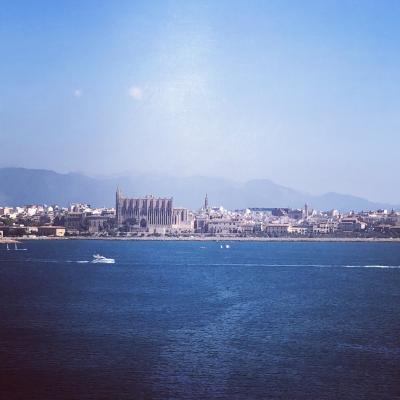Where in Palma can travelers experience authentic local markets and traditional foods?
Similar Topics
palma local markets
mercat de l'olivar
traditional mallorca foods
mercat de santa
authentic palma cuisine
palma tapas bars
palma easter market
mallorcan culinary traditions
Travelers seeking an authentic taste of Palma's local culture and traditional foods will find several vibrant markets and culinary spots that capture the city’s essence. One of the best places to explore is the Mercat de l'Olivar, a bustling indoor market located in the heart of Palma. Here, visitors can browse stalls brimming with fresh produce, local seafood, cheeses, and cured meats, offering a sensory introduction to Mallorca’s rich gastronomic heritage. The atmosphere is lively but approachable, where locals shop alongside tourists, making it easy to overhear conversations in Catalan and Spanish, and engage with the friendly vendors.
Another place highly recommended for an authentic experience is the Mercat de Santa Catalina. Known for its bohemian ambiance, this market not only showcases traditional foods like ensaimadas (a delicate Mallorcan pastry) and sobrasada (a spiced pork sausage) but also hosts several tapas bars that serve classic dishes in a relaxed, social setting. Sampling food here offers insight into the daily rhythms of Palma’s residents, as many locals gather for evening drinks and bites after work. Additionally, wandering the surrounding Santa Catalina neighborhood allows travelers to soak up the old-world charm of narrow streets lined with independent shops and cafés.
For those interested in a more artisanal and seasonal experience, the Palma Easter Market (Fira de Pasqua) and other smaller local markets often held in the Plaza Mayor or La Rambla provide opportunities to taste traditional sweets, cured hams, and freshly squeezed orange juice directly from Mallorcan producers. These markets emphasize handmade, locally sourced products and are perfect for immersing oneself in the culinary traditions passed down through generations. Whether visiting large markets or smaller neighborhood stalls, Palma’s authentic food markets offer a genuine slice of Mallorcan life, reflecting the island’s agricultural roots and culinary pride.
Another place highly recommended for an authentic experience is the Mercat de Santa Catalina. Known for its bohemian ambiance, this market not only showcases traditional foods like ensaimadas (a delicate Mallorcan pastry) and sobrasada (a spiced pork sausage) but also hosts several tapas bars that serve classic dishes in a relaxed, social setting. Sampling food here offers insight into the daily rhythms of Palma’s residents, as many locals gather for evening drinks and bites after work. Additionally, wandering the surrounding Santa Catalina neighborhood allows travelers to soak up the old-world charm of narrow streets lined with independent shops and cafés.
For those interested in a more artisanal and seasonal experience, the Palma Easter Market (Fira de Pasqua) and other smaller local markets often held in the Plaza Mayor or La Rambla provide opportunities to taste traditional sweets, cured hams, and freshly squeezed orange juice directly from Mallorcan producers. These markets emphasize handmade, locally sourced products and are perfect for immersing oneself in the culinary traditions passed down through generations. Whether visiting large markets or smaller neighborhood stalls, Palma’s authentic food markets offer a genuine slice of Mallorcan life, reflecting the island’s agricultural roots and culinary pride.
🧩 Related Questions
Related Question
How can visiting Mallorca’s cemeteries provide travelers with insight into the island’s cultural values and history?
Related Question
How accessible are the main photography spots in Valldemossa for travelers on foot?
Related Question
Are there Mallorcan sayings or proverbs that convey local wisdom or humor that travelers should know?

